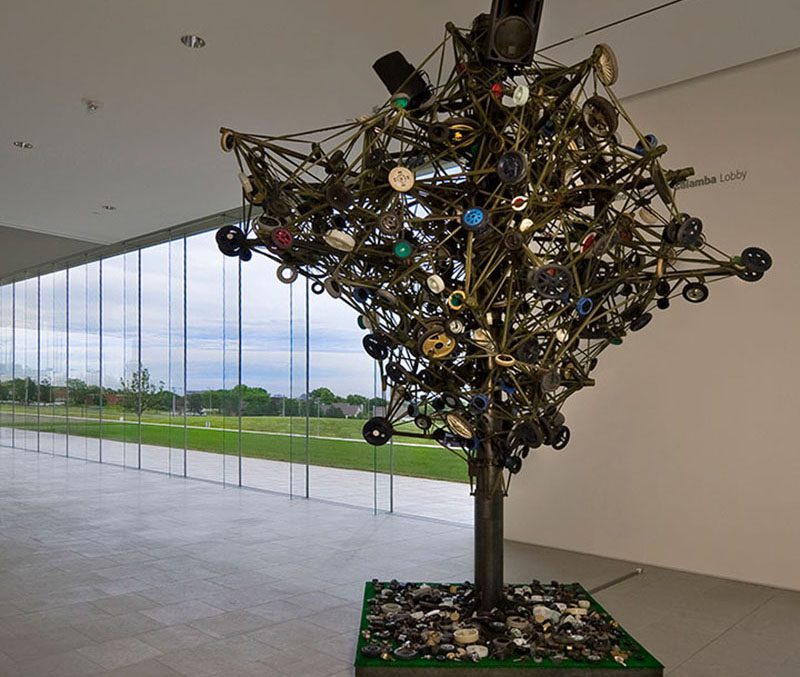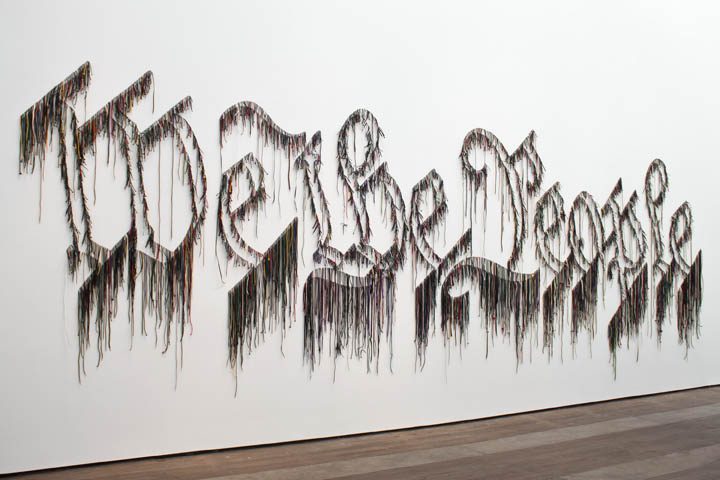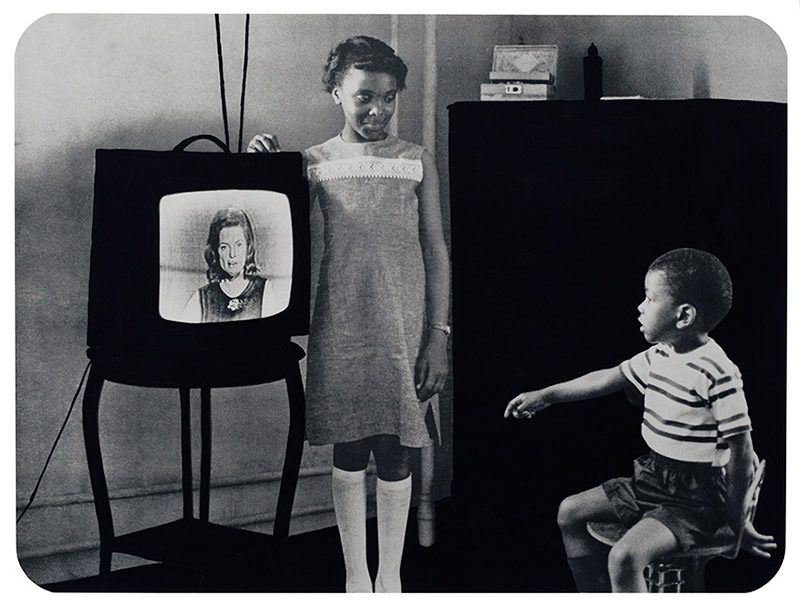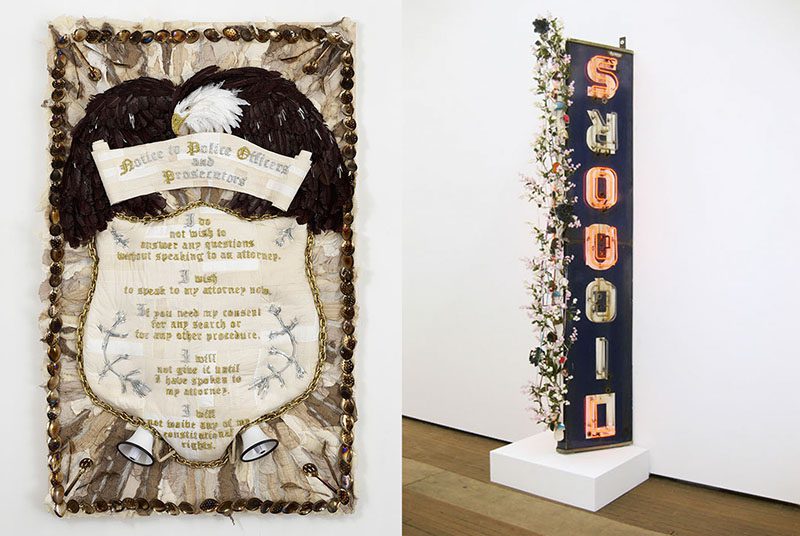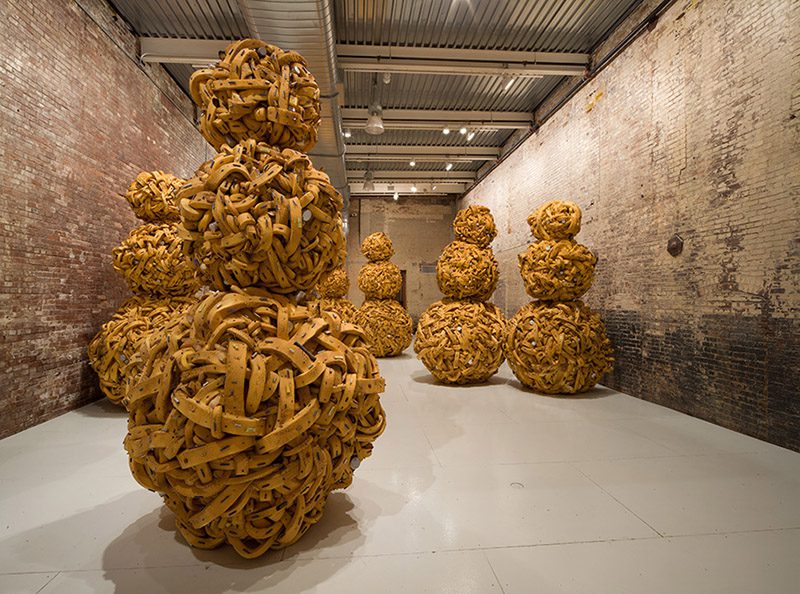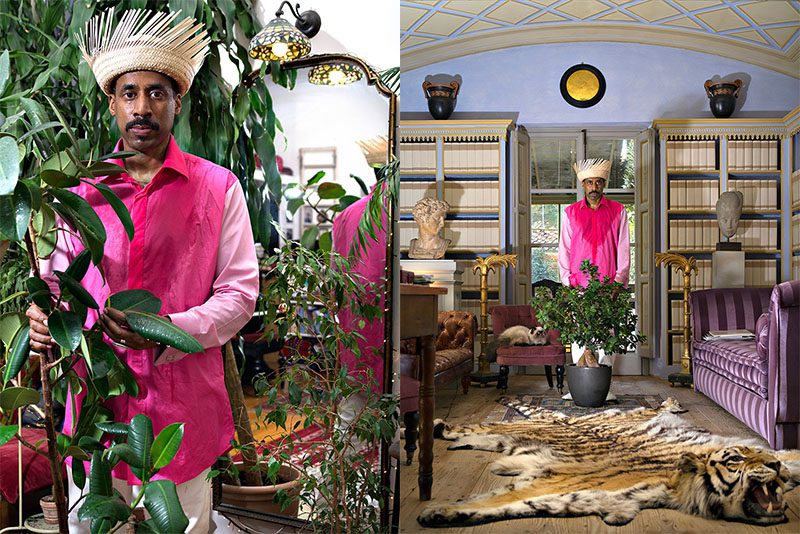ART-PRESENTATION: Nari Ward-Sun Splashed
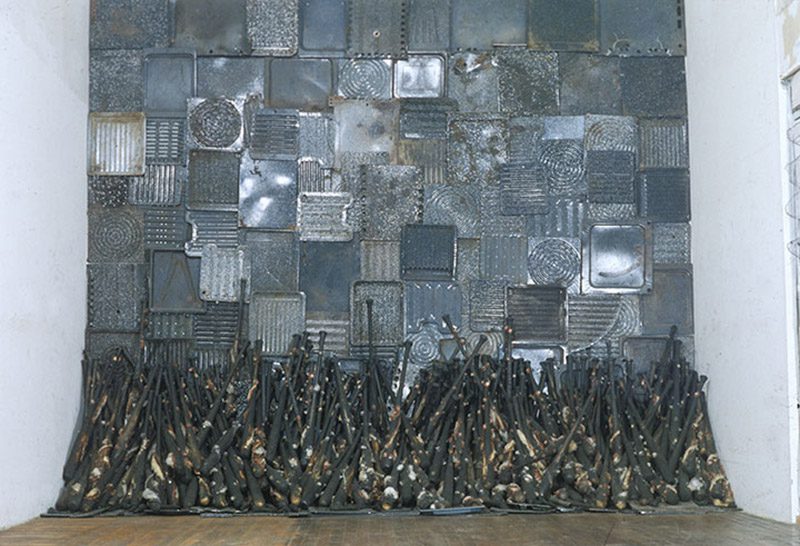 Emerging alongside a notable group of African-American artists who rose to prominence in the ‘90s, Nari Ward’s massive and tactile approach to art-making has expanded contemporary definitions of installation, assemblage, and site-specificity. His deft use of found objects imbues his work with a visceral relationship to history and the real world, allowing him to challenge viewers’ perceptions of familiar objects and experiences.
Emerging alongside a notable group of African-American artists who rose to prominence in the ‘90s, Nari Ward’s massive and tactile approach to art-making has expanded contemporary definitions of installation, assemblage, and site-specificity. His deft use of found objects imbues his work with a visceral relationship to history and the real world, allowing him to challenge viewers’ perceptions of familiar objects and experiences.
By Efi Michalarou
Photo: Pérez Art Museum Miami Archive
The exhibition “Sun Splashed” at Pérez Art Museum Miami, is the largest exhibition of Nari Ward’s found object sculptures and installations to date. This mid-career survey, featuring work from the ‘90s to today, will also showcase lesser-known aspects of his practice such as photography, video, and collage. Taken together, Ward’s oeuvre speaks with penetrating insight and imagination to a broad range of themes, including African- American history and culture, the dynamics of power and politics, and Caribbean diaspora identity. The exhibition’s title is drawn from a recent series of photographs that references a Jamaican reggae festival popular in the late ‘70s. Moving across distinct time periods and geographies these images reflect the humor and touristic clichés implied in their titles, but also suggest a more complex understanding of the relationship between place and selfhood particularly in “sun splashed” tropical locales. Self-conscious destabilization of meaning and attention to context run throughout Ward’s Practice and open up the possibility for new perspectives on the pressing social, spiritual and political questions that inform the way we inhabit the world. The work “Iron Heavens”, emerged from a simple observation, the metallic pinpricks that dot the dark, uneven surfaces of oven pans look like constellation of stars. Seeking to accentuate this visual metaphor, the artist collages pans together to create a night sky. The baseball bats, which are a signature material for the artist, form a ground for this sky. They have been burned and applied with cotton, gestures that indicate the racial violence in the context of the south. “Canned Smiles”, two tin cans, one labeled “Jamaican Smiles” and one labeled “Black Smiles”, the work explores the intersections of Art history and identity. In 1961 the Italian artist Piero Manzoni created “Merda d’Artista” or “Artist’s Shit”, 90 small cans labeled as such and available for sale. This gesture was a play on the idea that everything an artist makes has value (On 16/10/15, tin 54 was sold at Christies for £182,500). The work suggests a conceptual transformation of excrement into art and asks the viewer to that what is contained in the cans is real and worth something. Ward references this iconic artwork in his work and similarly interrogates the reality of constructed values. Playing on the stereotypes associated with the Jamaican National disposition and with minstrelsy in the USA, both of which typify black people as simple and happy-go-lucky. Other highlights of the exhibition are: “Happy Smilers – Duty Free Shopping” an immersive architectural installation that includes a real fire escape, found domestic objects, and an audio track, “The Saviour”, a sculpture that transforms a quotidian shopping cart through intricate assemblage, the accompanying video work “Pushing Savior” documents ward pushing the cart in the 125th Street in Harlem, “Glory”, a trenchant installation centered on a tanning bed made from oil barrels incised with the American flag, “Naturalization Drawing Table”, an interactive installation based around Ward’s experiences of becoming a U.S. citizen, when activated, viewers will be able to fill out a facsimile of an INS naturalization form and have it notarized in exchange for an editioned set of drawings the artist made on the same forms, “Mango Tourist”, a play on a form the artist has returned to in many works, the snowman, these larger than life sculptures transpose these frozen figures into tropical “tourists” made from foam, electrical detritus, and mango seeds, “Homeland Sweet Homeland”, a densely textured work that transcribes the rights of citizens when interacting with police officers and prosecutors into a seemingly domestic wall hanging that upon closer inspection contains all manners of collaged found elements including barbed wire.
Info: Pérez Art Museum Miami, 1103 Biscayne Blvd, Miami, Duration: 19/11/15-21/2/16, Days & Hours: Tue-Wed & Fri-Sun 10:00-18:00, Thu 10:00-21:00, www.pamm.org
